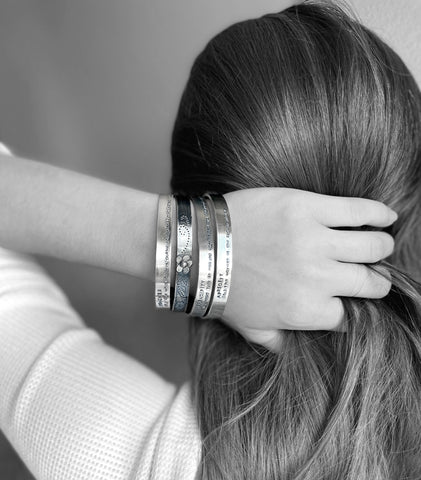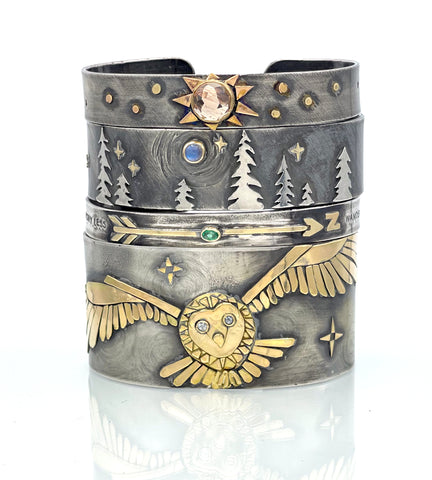Silver has captivated jewelry lovers for centuries with its luminous beauty and versatility. From everyday accessories to fine heirloom pieces, silver comes in various forms, each with its unique characteristics and uses. In this comprehensive guide, we'll explore the different types of silver, from "junk" to sterling to fine, and delve into how they are used and wear over time in jewelry.

- “Junk” Silver: Often referred to as "coin silver," junk silver refers to silver coins or objects that contain a lower purity of silver, typically around 80% to 90%. While not suitable for fine jewelry, junk silver is often melted down and repurposed for other silver products.
- Sterling Silver: Sterling silver is an alloy composed of 92.5% pure silver and 7.5% other metals, usually copper. This composition enhances the durability and strength of the silver while maintaining its lustrous appearance. Sterling silver is widely used in jewelry making and is recognized for its quality and value.
- Silver Plated: Silver plated jewelry consists of a base metal, such as copper or brass, coated with a thin layer of silver. While silver plated jewelry is more affordable, the silver layer can wear off over time, revealing the base metal underneath.
- Argentium Silver: Argentium silver is a modern variation of sterling silver that contains a higher percentage of pure silver (93.5%) and a small amount of germanium. This alloy offers enhanced tarnish resistance, durability, and hypoallergenic properties, making it an excellent choice for high-quality jewelry.
- Fine Silver: Fine silver, also known as pure silver, is composed of 99.9% pure silver. While extremely soft and prone to scratches, fine silver is valued for its bright white color and is often used for intricate detailing or accents in jewelry.
Usage and Wear Over Time
- “Junk” Silver: Typically not used for jewelry due to its lower purity and durability. However, it may be repurposed for crafting or other decorative purposes.
- Sterling Silver: Widely used for a variety of jewelry pieces, including rings, necklaces, bracelets, and earrings. With proper care, sterling silver jewelry can last lifetimes and develop a beautiful patina over time.
- Silver Plated: Suitable for fast fashion jewelry and accessories. Requires careful handling to prevent the silver plating from wearing off, not meant for heirloom or investment jewelry
- Argentium Silver: Ideal for high-quality, hypoallergenic jewelry that requires minimal maintenance. Argentium silver is highly resistant to tarnish and scratches, making it suitable for everyday wear.
- Fine Silver: Often used for delicate or intricate jewelry designs where purity and detail are paramount. Fine silver jewelry may require occasional polishing to maintain its brilliance.

Whether you're drawn to the affordability of sterling silver, the durability of Argentium silver, or the purity of fine silver, understanding the differences between various types of silver is essential for making informed jewelry purchases. By selecting the right type of silver jewelry, you can enjoy beautiful, long-lasting pieces that stand the test of time and become cherished heirlooms for generations to come.
Use this guide to confidently explore the world of silver jewelry and find the perfect pieces to complement your style and personality.
